Dogs with heat pad therapy can have less pain, less stiffness, and more relaxed muscles.
Can your dog’s arthritic pain be relieved by heat therapy? Indeed. In addition to providing your dog with certain benefits, an orthopedic dog heating pad can also be comforting on a chilly day.
Your dog with arthritis may find that heat helps both relieve and heal chronic pain over time. Not only can heat relieve your dog’s sore joints, but it also promotes blood circulation. Warmth frequently relieves muscle spasms and causes stiff joints to relax. Using heat on your dog can help him benefit as much as possible from stretching exercises or rehabilitation.
Heat treatment lowers muscular spasm, improves local tissue oxygenation and metabolism, and raises the pain threshold and extensibility of connective tissue.

Cold therapy works best to reduce inflammation after an acute injury. Consider using cold compresses for the first 24 hours if your senior Labrador aggravates a previous stifle injury, for instance. After surgery, cold therapy is the most beneficial alternative for up to 72 hours.
When using heat or leaving your dog on a heating pad, exercise caution. It’s possible to unintentionally warm the region and exacerbate the trauma. Pet-specific heating pads come with heat settings that are ideal for a dog’s requirements. It is possible to set a human heating pad too high, and overheating is particularly dangerous for elderly, injured, or young dogs.
Always make sure your dog is comfortable by checking on them often. Placing a covering, such as a towel, between your dog and the heating pad is usually the best option. Applying heat to your dog for longer than 30 minutes is generally not recommended, while your dog might benefit from as little as 10 minutes.
You may create a low-cost heating “pad” at home by heating a moist towel in the microwave. Keep in mind that your dog will find it too hot when you remove it if it is hot to the touch. You can apply the warm, damp cloth straight to a sore joint. The same goes for rice or maize kernels; keep them away from the dog, as well as hot water bottles. For your dog’s arthritis pain, warm therapy works great—but it’s important to use warm, not hot, therapy.
If you are interested in more information about our Posh Dog Knee Brace or treatment for your dogs leg injuries please contact us via our contact form or visit our Facebook Page.
Dogs undergoing physical therapy sessions can heal from wounds or surgeries more swiftly and with wider range of motion. Additionally, visiting a canine rehabilitation therapist doesn’t cost much.

Although it’s incorrect to refer to professionals who help humans as “physical therapists,” canine rehabilitation therapists offer the same services to dogs. With the increasing availability of dog physical therapy, some veterinarians have pursued post-doctoral studies in acupuncture, chiropractic, pain management, and other rehabilitation modalities.
For instance, the American Association of Rehabilitation Veterinarians (AARV) provides information on the efficacy of this method for managing pain and function loss resulting from disease or injury to veterinarians, veterinary surgeons, and pet owners. In an effort to better serve the special needs of working and athletic animals, including those with chronic conditions like arthritis and neurologic impairments, the American College of Veterinary Sports Medicine and Rehabilitation was established more recently.
Dog physical treatment typically starts with a referral to a canine rehabilitation therapist if your veterinarians do not specialize in rehabilitation themselves. These experts complete credentialing programs that concentrate on canine anatomy and physiology, common medical conditions and injuries, assessment methods, pain recognition, and rehabilitation programs to obtain credentials like CCRP (Certified Canine Rehabilitation Practitioner) and CCAT (Certified Companion Animal Rehabilitation Therapist). Among the therapies they provide are:
It’s crucial to remember that the field of canine rehabilitation treatment is evolving quickly due to the availability of new technologies and methods as well as ongoing research, which makes continuing education and staying up to date for rehabilitation therapists essential.
Dog physical therapy can be used to treat both acute and chronic diseases, much like comparable human treatments. A canine rehabilitation therapist may be able to assist with techniques, specialized equipment, and at-home exercise routines if your dog is in pain, has lost strength or flexibility, has an uneven gait or loss of balance, is recuperating from an accident, injury, surgery, or illness, or has chronic symptoms that interfere with favorite activities.
Certain therapies call for tools that you may use at home, like ramps, platforms, balance pads, cushions, and discs. Clinic consultations are necessary for other equipment, like swimming pools, treadmills for dogs, and electronic/magnetic gadgets.
In order to ensure that their dogs have comprehensive physical assessments and that the therapist can contact the veterinarian with any necessary medical treatments or diagnoses, the majority of canine rehabilitation therapists choose to collaborate with veterinarians. Meanwhile, other dog owners have put together their own teams for physical therapy, working directly with holistic practitioners such as massage therapists, chiropractors, and canine acupuncturists. Go to AHVMA.org, the website of the American Holistic Veterinary Medical Association, and select “Find a Member” to locate veterinarians who specialize in nutrition and complementary therapies that improve healing and rehabilitation.
A physical examination, which includes noting the dog’s stride, movement, structure, flexibility, strength, muscle tension, sore spots, and mobility, is the first step in seeing a canine rehabilitation therapist. The therapist will have time to get to know the dog and owner, go over the owner’s improvement and treatment objectives, and talk about the dog’s medical history and behaviors during what may be an hour-long session.
It could be beneficial to record your dog walking or moving in various directions both inside and outside as canine rehabilitation specialists concentrate on mobility and movement. Include the dates, diagnoses, and treatments of any specific illnesses, injuries, or incidents that have impacted mobility in your documentation.
The primary objective of the first visit is to create a strategy using the technology, tools, and therapies that are suitable. This frequently includes the suggestion of certain workouts to improve the muscles weakened by disease or trauma. Usually, these are made specifically for the patient to incorporate into an at-home workout regimen. Dogs that are healing from surgeries or accidents, or whose hind legs are weakening, may find that at-home exercise is very beneficial.
A follow-up plan can contain notes to distribute around family members to ensure that everyone can take part in the rehabilitation process and encourage the dog’s progress. This way, everyone in the family can help your dog heal.
Your dog’s progress will be meticulously documented by your canine rehabilitation therapist, who will also keep track of the specific therapies your dog has received, evaluate the effectiveness of rehabilitation plans, create exercise schedules that you and your dog can follow at home, schedule check-ups to record the healing process, and assess your home for any potential effects on the dog’s functional status.
Costs for veterinarian visits vary based on the type of treatment required, the therapist’s training and experience, and the location. Individual treatment sessions can cost anywhere from $50 to $100 or more, and initial consultations usually run between $100 and $200. The number of sessions needed for treatment determines the overall cost. Costs can be cut by using do-it-yourself therapies and home fitness regimens.
As long as the dog is insured prior to being sick or wounded, several pet insurance companies will pay for holistic and alternative therapies, including canine rehabilitation. For this reason, insurance specialists advise getting coverage for young, healthy dogs well in advance of the onset of any pre-existing conditions that might prevent coverage.
You understand the value of rehabilitation therapy if you have ever worked with a physical therapist following a disabling injury or illness, a broken bone, or a torn ligament. When the time comes, as an informed pet owner, you can be prepared to provide the same hands-on care for your dog by locating a canine rehabilitation therapist.
For more information on your dog physical therapy and how our Posh Dog Knee Brace helps in your dogs recovery contact us via our contact form or visit our Facebook page.
After knee injury surgery, custom braces can benefit your dog and in certain cases, can take the place of surgery.
It has been ten years since WDJ investigated the nonsurgical treatment of knee ligament problems, or “conservative management” (see “Saying ‘No’ to Surgery,” February 2010). Since then, there has been an increase in consumer demand for alternative therapies, such as the usage of custom-designed knee braces, even though surgery is still by far the most common therapy for knee injuries.
Canine ligament injuries are so common that almost every veterinarian has seen one. A dog may be completely unable to bear weight on the limb, exhibit a noticeable limp, or show signs of hind-leg lameness, depending on the severity of the damage. A partial or complete tear of a ligament could be the injury.
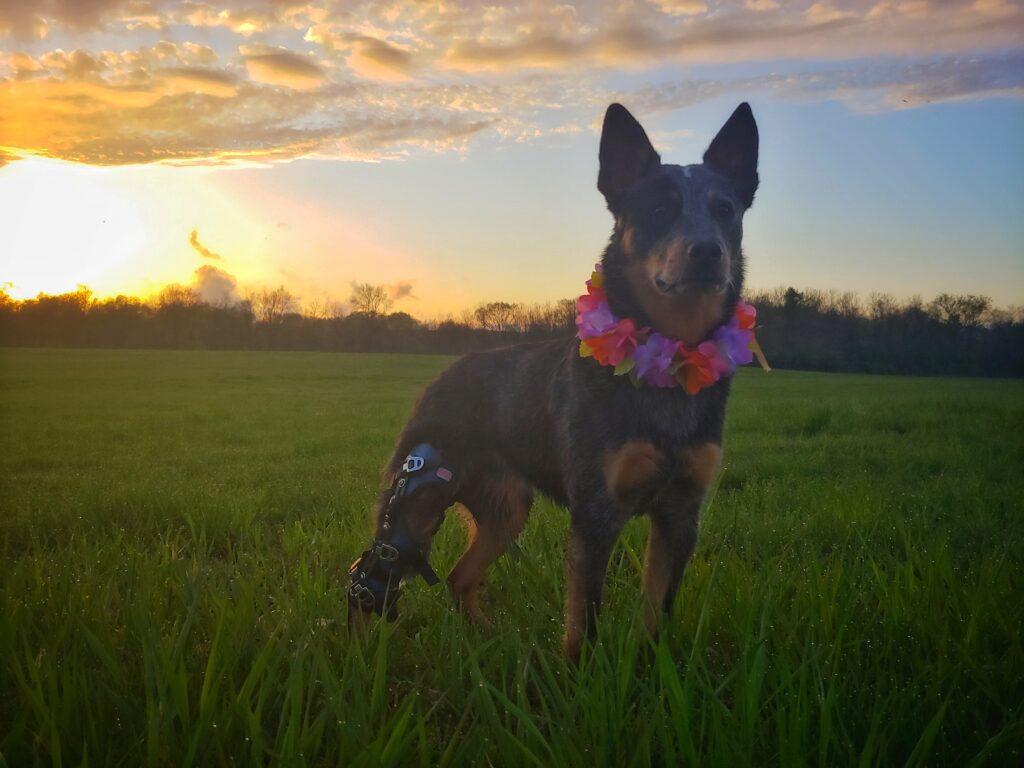
The terms “torn ACLs” and “bad knees” are well-known in the canine community. Knowing what these terms represent will be helpful if your dog sustains a knee injury that needs to be treated by a veterinarian.
The phrase “canine cruciate ligament disease” refers to a number of injuries that can harm a dog’s knee in this article. In general, the phrase uses the word “disease” appropriately because most dog knee ligament ruptures occur during normal exercise, despite the fact that the majority are the result of catastrophic injuries.
Additionally, several studies indicate that the majority of knee ligament injuries are caused by chronic degenerative changes within the ligament, as stated in an article titled “Review of Cranial Cruciate Ligament Disease in Dogs” that was published in the World Small Animal Veterinary Association World Congress Proceedings in 2011.
Ligaments are bands of connective tissue that strengthen and support joints by joining bones to cartilage.
With the patella (kneecap) in front and the fabella (a tiny bean-shaped bone) behind, the stifle (knee) joins the tibia (leg bone) and femur (thigh bone). Ligaments hold everything in place while cartilage (the lateral and medial meniscus) cushions the bones.
Within the knee joint, the cranial (front) and caudal (back) cruciate ligaments cross. The tibia cannot move out of place beneath the femur because of the cranial cruciate ligament. While the words “cranial cruciate ligament” (CCL) and “anterior cruciate ligament” (ACL) are used in veterinary medicine and human medicine, respectively, they relate to the same ligament and are used to characterize knee injuries in dogs.
Despite the fact that radiographs, or x-rays, do not show soft tissue and cannot be utilized to distinguish between a partial and total tear or diagnose cruciate injuries, they are frequently used to screen for cruciate ligament illness. However, they can rule out other illnesses that might be the source of leg discomfort, such as bone cancer. Dogs rarely undergo advanced imaging tests like MRIs because they are costly and necessitate anesthesia, even though they can show tears in the ligaments.
The “drawer test,” which involves a veterinarian holding the femur in one hand while manipulating the tibia in the other, is the primary diagnostic method for CCL rips. Should the tibia be able to be pulled forward, as though opening a drawer, there has been a tear or rupture in the cruciate ligament. nervous patients may be anesthetized prior to the drawer test since it can be inconclusive if the stiff muscles of a nervous dog briefly stabilize the knee.
Another test for ligament damage is the tibial compression test, in which the dog’s ankle is flexed with one hand while the femur is kept steady with the other. The abnormal forward movement of the tibia is caused by a damaged ligament.
According to a recent estimate that has been cited by a number of veterinary websites, over 600,000 dogs in the US undergo cruciate ligament surgery annually.
Canine cruciate ligament disease risk factors include genetics, obesity, poor physical condition, conformation (skeletal shape and structure), age of the ligament (degeneration), and breed, according to the American College of Veterinary Surgeons (acvs.org). Rather than being ruptured due to an acute impact to an otherwise healthy ligament, most ligament ruptures occur as a result of slow, subtle degeneration that has occurred over months or even years. Between 40 and 60 percent of dogs with damage to one cruciate ligament later have damage to the other knee. According to the ACVS, if a partial cruciate ligament rupture is not treated, it is likely to eventually become a full tear.
According to the ACVS, CCL injuries can occur in dogs of all shapes, sizes, and ages, although they are most frequently seen in Rottweilers, Newfoundlands, Mastiffs, Akitas, Saint Bernards, Chesapeake Bay Retrievers, and Labrador Retrievers.
There is a significant correlation between neutering before one year of age and ruptured cruciate ligaments. The study “Assisting Decision-Making on Age of Neutering for 35 Breeds of Dogs: Associated Joint Disorders, Cancers, and Urinary Incontinence” (Benjamin Hart, et al.) was published in the journal Frontiers of Veterinary Science on July 7, 2020. It revealed that early neutering of male Bernese Mountain Dogs, Cocker Spaniels, and Miniature Poodles; male and female German Shepherd Dogs, Golden Retrievers, Labrador Retrievers, and Rottweilers; as well as female Saint Bernards and Australian Cattle Dogs significantly increased risk of cruciate ligaments.
The study’s conclusion was, “A likely mechanism related to disruption of the closure of the long-bone growth plates by gonadal hormone secretion as the animal approaches maturity is related to early neutering may cause a joint disorder.” According to our theory, neutering a dog well before the growth plates close allows its long bones to grow slightly longer than average. In some cases, this can cause enough joint alignment problems to cause a clinically noticeable joint condition.
Similar findings were observed in mixed breeds, particularly for dogs weighing 44 pounds or more and neutered before one year of age, according to a related study, “Assisting Decision-Making on Age of Neutering for Mixed Breed Dogs of Five Weight Categories: Associated Joint Disorders and Cancers” (Frontiers of Veterinary Science, July 31, 2020, Benjamin Hart, et al.).
There is nothing owners can do to reverse a dog’s neuter status, but there are plenty of things we can do to save our vulnerable pets’ knees. Excessive body weight and poor physical condition are risk factors for the development of canine cruciate ligament illness, as stated on the ACVS website. Pet owners have the ability to alter each of these aspects. Maintaining a lean body mass requires careful meal control, regular exercise, and consistent physical conditioning.
Custom braces—which go by numerous names including knee, stifle, ACL, or CCL braces—are made by several manufacturers using various materials and techniques. Braces are also made to fit the hocks, hips, ankles, and wrists of dogs.
In order to assess how strong the brace needs to be in order to support the dog’s weight and activities, as well as any unique features the brace might need, the first step in designing a bespoke brace is to analyze the patient’s size, breed, medical history, activity level, and environment.
Next, casts or detailed measurements create a model of the dog’s knee. The last step is to schedule a fitting visit, where any necessary modifications are performed and images and videos of the dog exercising while wearing the brace are taken.
The dog wears the brace during the day after a break-in period. “Most dogs put it on in the morning and take it off in the evening before bed,” the owner says.
The majority of custom brace designs are based on leg models that were cast at the client’s house or in a veterinary clinic using supplies supplied by the brace maker. For the purpose of designing the brace to fit, the resultant cast is supplied together with supporting measurements. Castings that are damaged during shipment or that were made erroneously may require repeat castings. The visit raises the price of the brace if it is performed at a veterinary facility.
The 77-pound Golden Retriever Pasha, then 11 years old, suffered a left hind leg injury that led to the creation of the Posh Dog Knee Brace seven years ago. Pasha’s veterinarian determined that he had a torn meniscus and a ruptured cranial cruciate ligament. He advised surgery immediately once, stating that if the damage was not repaired, Pasha would suffer a similar lesion to his right leg, develop severe arthritis, and be unable to live an active life again.
Although Jim Morison and Beth Scanlon, who live in Florida, could afford the $5,000 surgery, they were concerned about Pasha’s age and past medical history, which included a bad anesthetic response. Pasha’s recuperation started when they ordered a custom-made knee brace rather than arranging surgery.
Although Morison was pleased with Pasha’s development, he felt that the brace might be made better in a few areas. He started creating modifications and, in the process, established his own knee brace business, which he called Posh after one of Pasha’s pet names. Pasha was swimming at the beach and running through tide pools six months after donning her upgraded brace, and she was fully recovered in nine months.
“We now use a different design, but we started with the type of brace that requires a casting mold,” says Nikki Bickmore, lead veterinary technician at Posh, who also manages the service department and production.
“Posh assembled a group of orthotists and veterinarians to create a new system that would do away with casting,” Bickmore adds. As a result, the brace has many padding layers and is semi-rigid rather than hard plastic, allowing it to adapt to the dog’s muscles as they contract and flex. The only brace that incorporates double-reinforced hinges from the Tamarack brand, positioned on two layers of plastic, to strengthen the brace at important stress locations is ours. The brace fastens with quick-release microbuckles, which are common in expensive snow and water sports gear, and fits without causing any rubbing, irritation, or slippage.
Ordering is sped up and slowed down by using measurements rather than casting to create a replica of the dog’s leg. Most braces come within a week after precise measures are given, but buying takes longer since clients need to watch instructional videos and take measurements with two individuals during a live video conference while a veterinary technician watches over them. A Posh vet tech must supervise the fitting of a brace during a second video chat before it can be worn.
The fact that our braces fit well and are simple to use is what most people appreciate about them, according to Bickman. They appreciate that our solution uses buckles and straps instead of Velcro, which can tangle in a dog’s hair. Because we use a soft shell instead of a hard one, the brace is more pleasant to wear, has greater range of motion, is long-lasting, and is very simple to clean.
Three-year-old Howdy, an Australian Cattle dog, was born with incontinence, spina bifida, and nerve damage in his hind end. Bickman states, “He’s a favorite of the Posh staff.” He was adopted by Alicia McLaughlin at the age of six months. Shortly after, he had a tear to his CCL and also had a luxating patella. Many believed that he ought to be put to death, but thanks to bracing, Alicia, and a lot of love and patience, he is now happily living in the country in New York.
Don’t think that just because your dog starts favoring one leg over the other, the issue will go away. That could be, but it could also be a sign of cruciate ligament damage. To be sure, make an appointment with your veterinarian.
Both surgery and brace use need to be carefully considered. The proper usage of the custom-fitted braces discussed here requires time and attention commitments, and they are not cheap. Not every owner or dog is a suitable candidate for bracing. Information collection and a realistic grasp of the issues at hand are essential for making wise judgments.
For more information about our Posh Dog Knee Brace contact us via our contact page or visit our Facebook Page.
Absolutely, custom-made braces can be a great solution for dogs with a torn ACL (also known as the cranial cruciate ligament or CCL). Here are some points to consider when looking for a brace for a dog with a torn ACL:
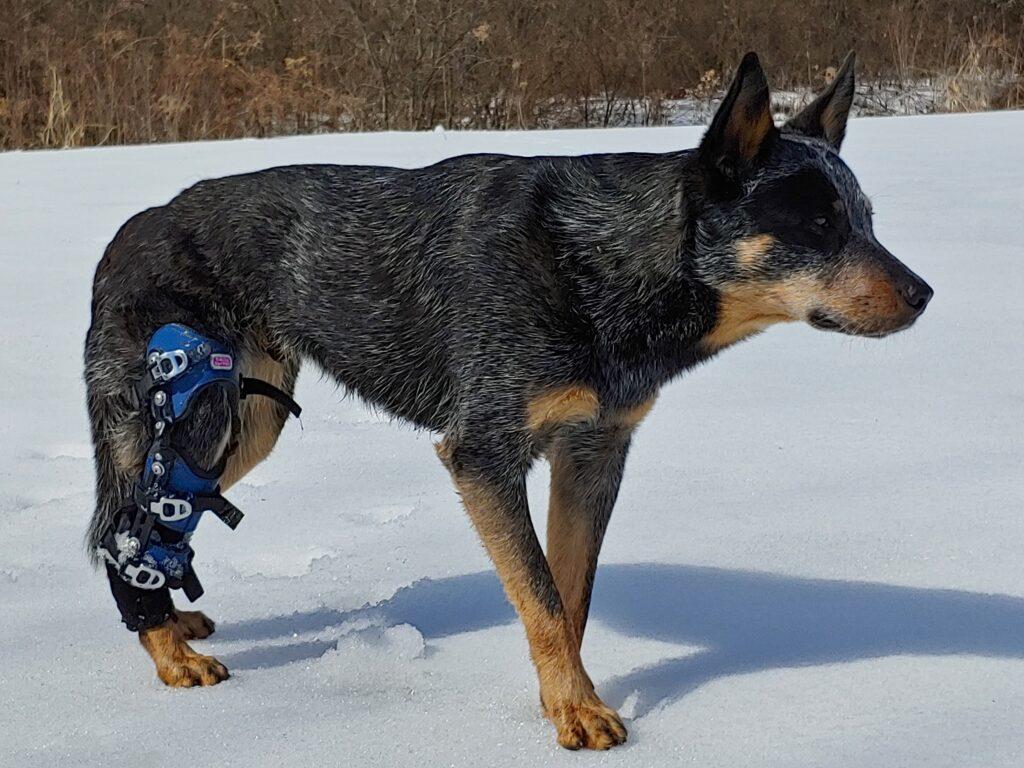
Your dog’s veterinarian might suggest surgery if he/she tore his/her anterior cruciate ligament (ACL). That may cause stress for your wallet, your dog, and you. You may be wondering if you can give your dog appropriate comfort and care while using an ACL dog brace in order to avoid surgery for your dog’s torn ACL. Indeed you can, but only if you get your dog a quality ACL brace, like our Posh Dog Knee Brace.
If you’re wondering if your dog has an ACL tear, the symptoms of an acute rupture are quite typical. Usually, the dog yells and stops bearing any weight on its rear leg when it is running and playing. The dog will frequently still walk around but may sometimes run on three legs and hike up or hang the injured limb.
For the majority of cruciate tears, surgery in the form of a tibial-plateau-leveling osteotomy (TPLO) is the best course of action; however, ACL braces are also showing to be an effective remedy.
Dog owners who participated in a study comparing TPLO surgery and custom stifle orthotics reported high levels of satisfaction with both procedures. The phrase “custom stifle orthotics” was used in the study. You might be tempted to order an all-dog cloth brace online in an effort to get one quickly and at a low cost. Your dog doesn’t require that in order to support its torn ACL. Your dog requires a specially made brace composed of durable material. Although many excellent companies make custom braces for a dog with an ACL tear, Posh Dog Knee Brace is a good option to take into consideration.
Restoring stifle joint stability is the aim of treatment for your dog’s torn ACL. The famous “drawer sign,” which happens when the veterinarian holds the femur in place while the tibia can be pulled forward like a sliding drawer, is caused by your dog’s unstable stifle due to the loss of an intact ACL/CCL. It’s a sign that the CCL has ruptured. Pain results from this laxity, which also promotes the growth of osteoarthritis.
It follows that neither braces nor surgery are a quick fix. A brace may occasionally be recommended by a veterinarian to aid in your dog’s recovery following surgery or be recommended as a alternative option instead of surgery as well.
Whichever approach you decide on, consult your veterinarian or one of our Posh Vet Tech for advice and direction as you help your dog heal as well as to ensure that you have the right diagnosis.
If you think a brace might be a good option for your dog, contact us today via our contact form or call us at 509-412-3065. You can also visit our Facebook Page.
Hi guys, this is Nikki Lead Veterinary Technician with Posh Dog Knee Braces, and today let’s discuss how many hours a day your dog should wear a knee brace. Now this also really depends on what we are treating. If we have a full CCL tear with meniscus involvement, I may suggest you use the brace more often than a patient with a partial tear.
Also, how much energy your dog has is a big factor on how many hours you really need to be using the brace. Some brace companies say wear the brace all day long, with no breaks. This can lead to a lot of problems initially, if you have not properly broken in the wearing time of your brace.
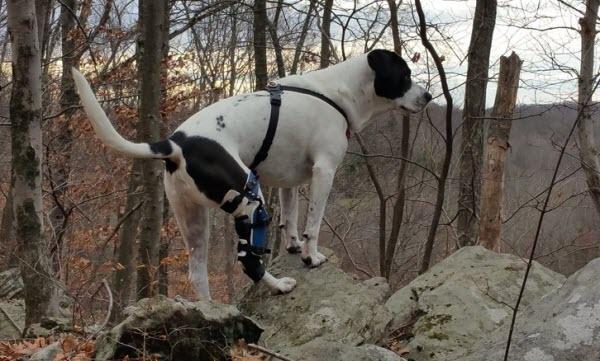
If you have a high energy dog, one that dives off of stairs and furniture, and is harder to control, you may be advised to use the brace a bit more. Now, we only suggest using braces during times that your dog is supervised. This is a medical device, and should not be worn without direct supervision. I would suggest starting out slow, just using the brace during walks and activities hours your veterinary technician will go over with you. Once your dog has been using the brace well, and you feel more confident, you can begin to increase the amount of time (hours) your dog uses the brace.
I still like to give breaks during the day, especially if there is a time they like to lay down and nap. For instance, using the brace for 2 to 3 hours in the morning, while they get the wiggles out, go potty, walk, and breakfast is perfectly fine. You may then opt to remove the brace during lunchtime, as most dogs calm down around this time. Then, you can place the brace back on in the afternoon, and remove prior to going to bed. This is just a suggested scenario, but again you do need to continue monitoring them with the brace.
We do not suggest any patient to wear the brace 8-12 hours a day, as anything that is worn that long on human or dog can cause skin irritation.
If your dog is pretty chill, relaxed, and only really active outside (such as giant breeds), then I would suggest using the brace just for activities. These can include walks, car rides, when someone comes to visit, playing with another dog, stairs, ect. If they spend most of their time laying down, it would not be comfortable to leave a brace on all day long. Let them get cozy, but we will be suggesting some Physical therapy activities to help prevent atrophy.
Put a sign outside your door, this will help discourage people from ringing the doorbell or knocking. Most dogs react to hearing a knock and doorbell, so if we can cut back on those times that will really help with preventing re-injury. Instead, put your phone number on the sign, so they can text you if someone arrives to visit.
Always feel free to speak to your service veterinary technician with any questions, that is what we are here for! Thank you, and give your dog a big hug for us!
You can contact us via our contact page or visit our Facebook page for more information.
Let Your Dog Recover With Our Custom Dog Knee Brace!
We’ve Helped Dogs All Around The World, Now We Want To Help Yours…
The Posh Dog Knee Brace is a 100% custom Dog knee brace, hand made only for your Dog. We make our custom brace with no casting. Our state-of-the-art brace for Dogs is very durable, waterproof, sand proof, and easily adjustable by customers. Our Veterinary Technicians provide personal live video supervision of measuring, and fitting of your Dog ACL brace in the comfort of your own home.
Dog knee braces, also known as stifle braces, are orthopedic devices designed to provide support, stability. These braces are commonly used in the management of various knee-related issues, including ligament injuries, osteoarthritis, or after surgical procedures. The science behind dog knee braces involves biomechanics, support, and the promotion of healing. Here are some key aspects:
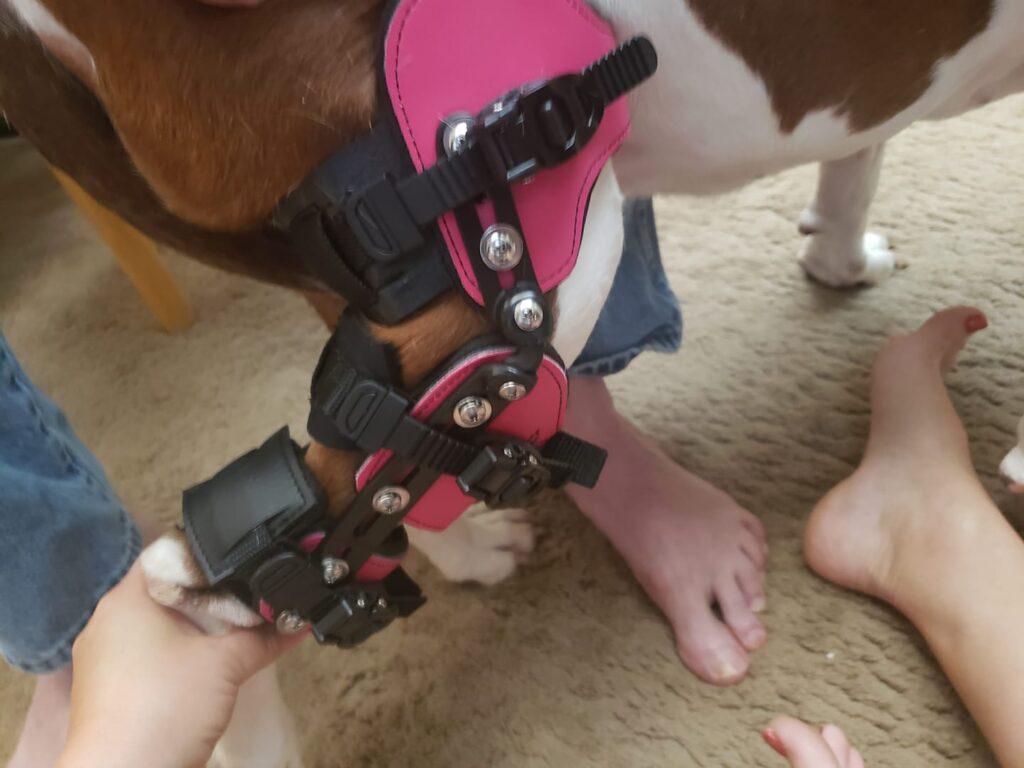
While knee braces can be beneficial, they are not a one-size-fits-all solution, and their effectiveness may vary depending on the nature and severity of the knee issue. Always consult with a veterinarian for a proper diagnosis and guidance on the use of knee braces for your dog’s specific condition. Also check the materials, and make sure the brace is custom.
If you are interested in a Posh Dog Knee Brace you can order online or contact us with more information, visit our Facebook Page to see what our customers have to say.
Dogs can be prone to injuries related to various physical activities. Understanding the types of injuries associated with specific activities can help dog owners take preventive measures and seek appropriate veterinary care when needed. Here are common activity-related dog injuries:
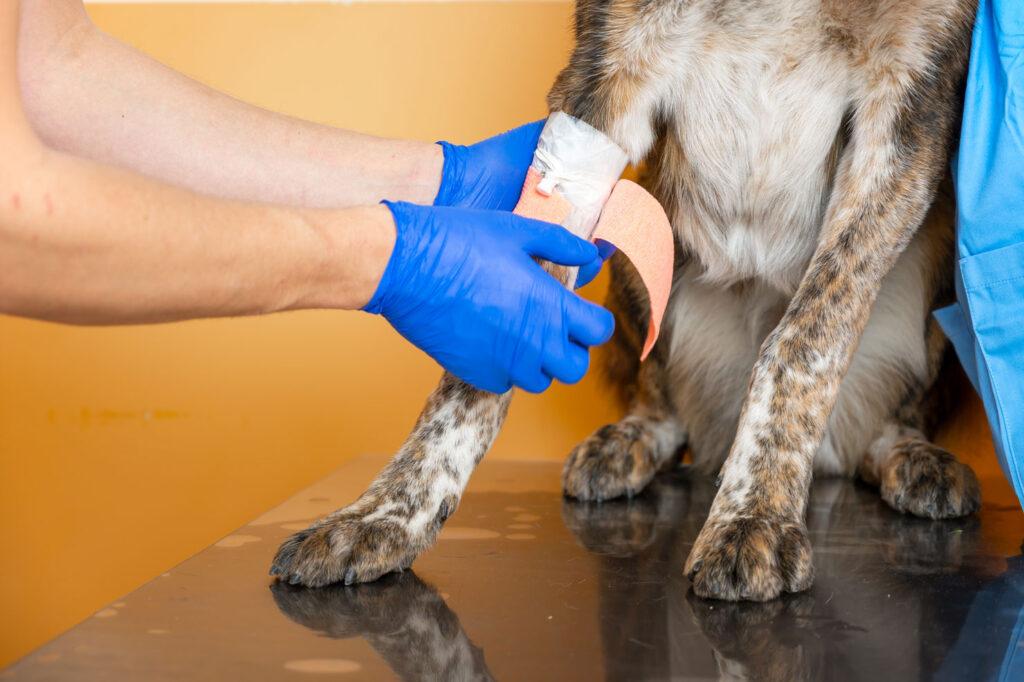
Preventing activity-related injuries involves being mindful of your dog’s limitations, ensuring they are adequately conditioned for the activity, and providing proper warm-up and cool-down periods. Regular veterinary check-ups can help detect and address any underlying health issues that might predispose a dog to injuries during physical activities. If an injury occurs, prompt veterinary attention is essential to ensure proper diagnosis and treatment.
For more information about related injuries or if you would like information about our brace contact us via our contact form or visit our Facebook page.
Hello! This is Nikki, Lead Veterinary Technician with Posh Dog Knee Braces. Today let’s go over how to break-in a new Posh Custom Dog Brace. First, we want to take things nice and slow. You wouldn’t take a brand new pair of boots to Disneyland resort for 10 miles of walking each day I hope. Neither should we put a custom brace on a dog for 8-12 hours without first working into that time. Just like in people, a dog’s skin needs some time to get adjusted to wearing something.
Over the next few weeks, as we gradually increase the times we have them in the brace, the skin will start to thicken and get stronger. Just like our feet do with a new pair of shoes. After a few short weeks, they should be able to tolerate wearing the brace longer and longer.

In the first 1-2 weeks, we suggest only using the brace during short leashed walks. This is to get your dog used to walking in the brace, to prevent soreness, and to get their skin used to having something touching. It can take a patient sometimes up to 3-4 weeks for the soreness in the muscle to get better, just like if we did physical therapy.
You wouldn’t want to run a 10K marathon with no practice or training, right? Even if your dog was walking 4+ miles each day before the injury, we now have atrophy and muscle loss (yes even if its only been a few weeks). Starting out with nice slow walks, and building up the times slowly, will really help prevent soreness and rubbing issues.
We typically don’t see rubbing sores with Posh, because we are so clear on our direction to our clients. Wearing the brace gradually more and more each week, really helps them adapt to having something touching their sensitive areas. The upper groin and ankle area seem to be the most common areas we see any irritation, and usually if the brace was worn for too long too fast. Doing 10-15 minutes twice daily for 2 weeks, then adding 15 minutes weekly to their walk schedule will really help.
We have this break-in schedule completely broken down for our clients in the handouts we send after the brace has been fit properly with a technician. A custom brace should never be worn right off without some sort of consultation, to ensure proper fit and make sure your dog is using the brace properly. Any company that does not do this is a red flag in my book.
Let me know if you have any questions about our break-in schedule! Please contact us via our contact page or visit our Facebook Page.
Nikki, Posh Lead Veterinary Technician
Reiki is a form of alternative therapy that originated in Japan and is based on the concept of channeling healing energy through the practitioner’s hands. While scientific evidence supporting the effectiveness of Reiki is limited, some dog owners and practitioners believe that it can provide various benefits for dogs. It’s essential to note that Reiki should not replace conventional veterinary care but can be used as a complementary approach.
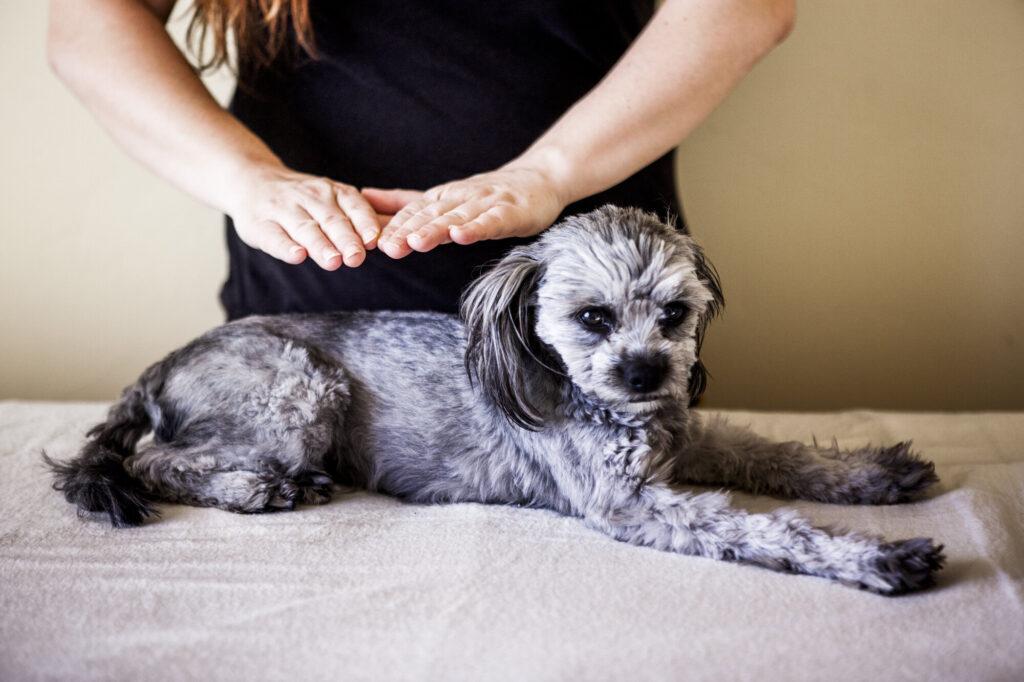
While some dog owners report positive experiences with Reiki, it’s important to approach it with an open mind and consult with a veterinarian before incorporating it into your dog’s care plan. Always prioritize conventional veterinary care for diagnosing and treating medical conditions.
For more information on how to help your dog recover with their injuries or if you are interested in a Posh Dog Knee Brace you can contact us via our contact page or visit us on Facebook.
Knee injuries are relatively common in dogs and can lead to varying degrees of pain, lameness, and mobility issues. One of the most prevalent knee injuries in dogs is a torn cranial cruciate ligament (CCL), which is analogous to the anterior cruciate ligament (ACL) in humans. The CCL helps stabilize the knee joint and prevent excessive movement between the femur and tibia bones.
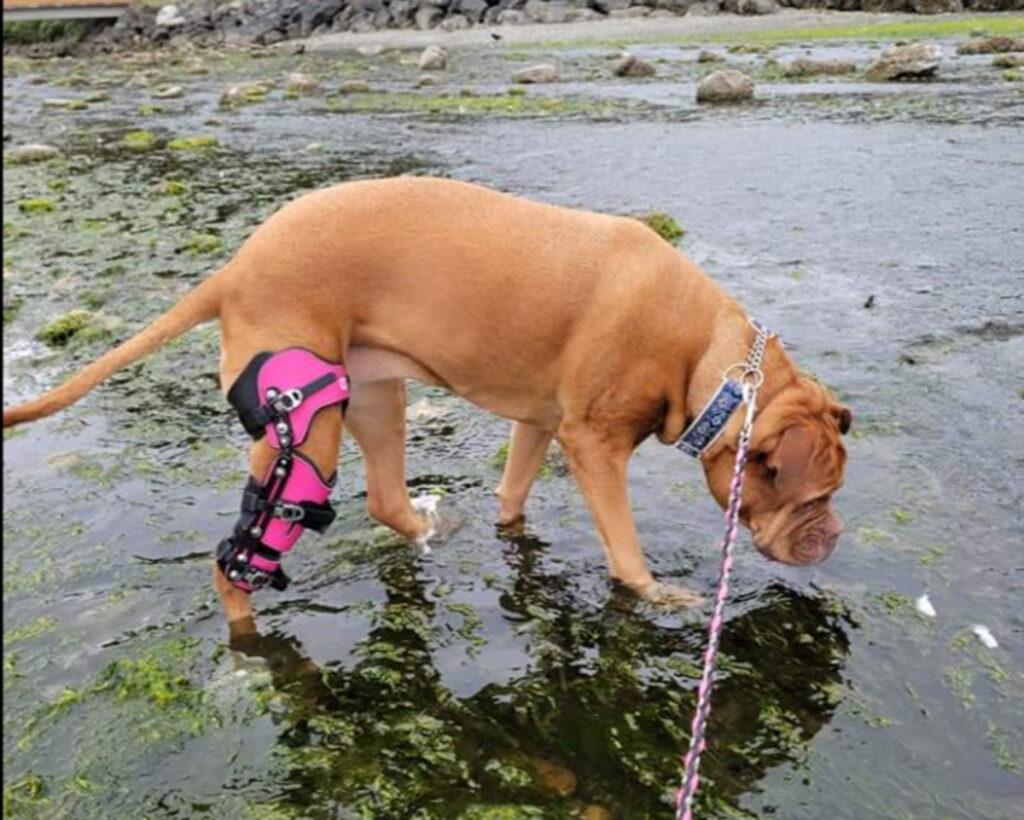
If you suspect your dog has a knee injury or is experiencing any of the above symptoms, it’s essential to seek veterinary attention promptly. Your veterinarian will conduct a thorough physical examination, possibly including X-rays or other imaging tests, to diagnose the specific knee injury and develop an appropriate treatment plan.
The choice of treatment will depend on the severity of the injury, the dog’s age and overall health, and the veterinarian’s recommendation. Early diagnosis and appropriate treatment are crucial for improving the dog’s comfort and mobility and preventing further joint damage or complications.
If you are interested in purchasing a Posh Dog Knee Brace you can order from our shopping page or if you have questions about our brace you can reach out to us via our contact form or visit our Facebook page for more information.
Today I would like to talk about recommended activity levels with a brace or CCL tear. It is still important to remember that this is not a race. Recovery from a CCL takes time, which is why we use a gradual increase in activities.
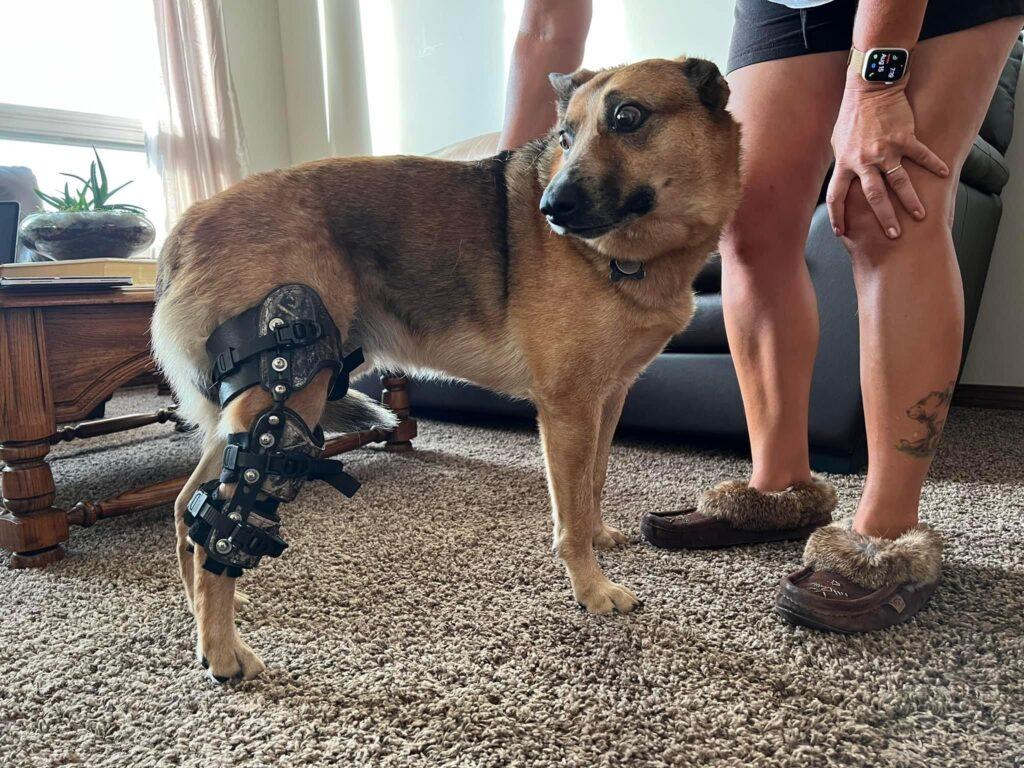
Initially, we start with walks and light physical therapy and massage. Gradually, we can increase activities, such as adding hills or inclines to the walk, sit stands, more muscle building activities.
It is not recommended to let your dog run off leash while in recovery. This can lead to injury of the other leg potentially. Braced walks are meant to be nice and slow, not a jog. The goal is to have your dog placing full weight down on his leg. If you walk or run too fast, they will skip and not place full weight on the leg.
We will get to a point where your pup can play off leash, but ask first, and take things slow. Feel free to email or send in a contact request with any questions, we are happy to help!
Give Your Dog a Big Hug From Us!
Nikki, Posh Lead Veterinary Technician
Looking for more information about our Posh Dog Knee Brace contact us via our contact form or visit our Facebook Page.
Rehabilitation therapy, also known as physical therapy or physiotherapy for dogs, offers a wide range of benefits that can significantly improve their overall health, mobility, and quality of life. It is especially beneficial for dogs recovering from injuries, surgeries, or managing chronic conditions.
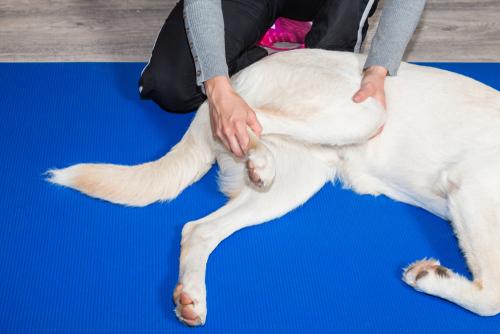
Rehabilitation therapy for dogs is typically provided by licensed veterinary professionals, such as certified canine rehabilitation therapists (CCRT) or veterinarians with specialized training in physical therapy. If you believe your dog could benefit from rehabilitation therapy, consult with your veterinarian to discuss the best options for your dog’s specific condition and needs.
If you are interested in a Posh Dog Knee Brace visit our store page to purchase and if you need more information or would like to keep up to date on new things with Posh Dog Knee Brace visit our Facebook page.
Finding relief for arthritis in dogs involves a combination of veterinary care, lifestyle adjustments, and supportive therapies. Arthritis is a degenerative joint disease that causes pain and inflammation in the joints, and it is common in senior dogs and large breeds. Here are some ways to help relieve arthritis in dogs:
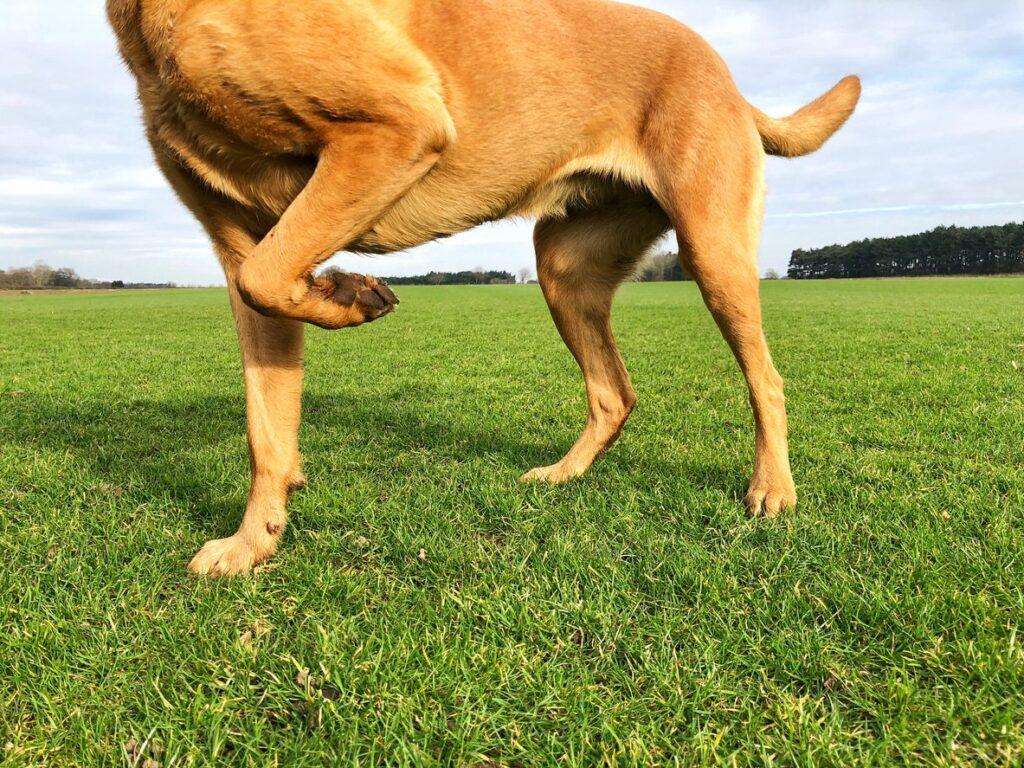
Remember that arthritis is a chronic condition, and while these measures can provide relief and improve your dog’s comfort, there is no cure for arthritis. Regular veterinary check-ups and ongoing management are essential to support your dog’s well-being and manage the progression of the disease. If you would like more information about our Posh Dog Knee Brace contact us via are contact page or visit our Facebook page.
Hey guys, this is Nikki the lead veterinary technician with Posh Dog Knee Braces. Today, let’s talk about how being overweight can affect our joints. As you know, the more weight we have, the more pressure we put on our joints and internal organs. This can put the body in a state of inflammation, as well as predispose us to many ailments and orthopedic issues. We are making our joints work much harder, which starts a vicious cycle on inactivity. The more the joints are sore, the less your dog will want to walk, which can cause the muscles to atrophy. Pretty soon we have a pup with less muscle, and much more prone to physical injuries like CCL tearing.
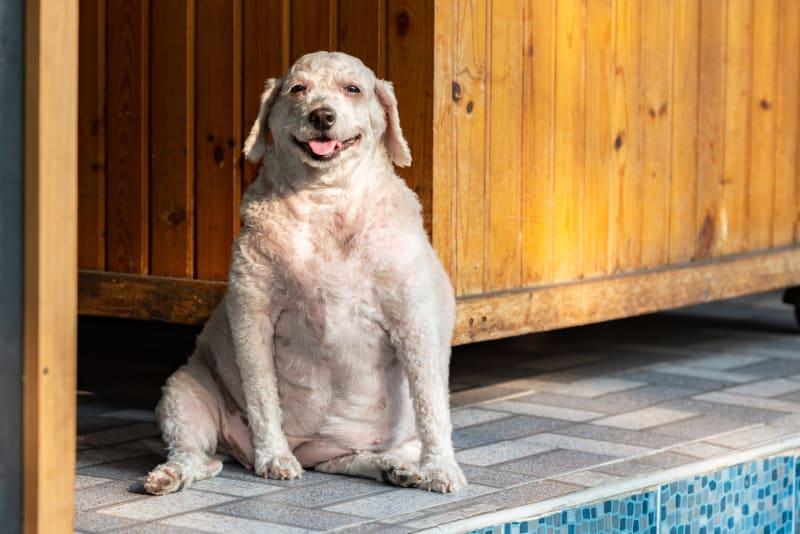
Not only does weight gain affect the organs and joints, but it also can shorten life expectancy by quite a bit. Unfortunately, this is not going to be a quick fix situation. It is much easier to get the weight off a younger dog than one that is aging. Prevention is much easier than treatment, especially if your dog is spayed or neutered, which can increase the chances of becoming overweight.
If your dog is in the top weight percentile, and does not yet have any limping issues, it’s time to get serious about weight loss. Things you can do first is check everything that you are feeding your dog every day. I want a list of each and every treat, kibble, and snack. Small things like swapping daily treats for a carrot or sweet potato stick, ect can help, as well as increasing exercise. If you have a dog that does not like to exercise, starting slow is key. Maybe 15 minutes a few times daily will really help. It is important not to skip exercise. Walking and swimming is great.
Second, changing diet is next. If you are feeding a diet that has a lot of carbohydrates, and less protein, it may be time to switch. I like diets with a good quality protein source, not by products. Make sure you are not feeding grocery store foods, unless you absolutely have to. There are many good quality foods out there. If you are already feeding a good quality food, make sure you are not feeding too much.
If you are not sure what to be feeding your dog to help, please consult with your veterinarian, maybe schedule a time to go over the nutritional needs of your dog with your Dr. or a veterinary technician. They may have a specific diet they recommend.
If you have an overweight dog that already has a limp or headed for a CCL tear, but not there yet, then I would strongly suggest finding a physical therapy clinic, one with hydrotherapy. This will help strengthen the leg, and loose weight.
Please call or email with any questions! www.poshdogkneebrace.com or visit our Facebook Page.
Hey guys, this is Nikki Lead Veterinary Technician with Posh Dog knee Braces. This is one of my most common questions asked will my dog need a knee brace forever for a CCL/ACL tear?, and I would like to dive deeper to answer this question, as there is more to the answer than simply No.

First off, the majority of my patients will use the posh dog knee brace for about 9 months, sometimes up to 12 months if they are a larger breed or have a minor meniscal tear. We know that scar tissue is mature by the 9-12 month point, and at the juvenile stage around month 2-3. If someone tells you that your dog will be permanently using the knee brace, they are simply misinformed. There are actually quite a few studies in both humans and animals, proving the timeline of scar tissue formation.
In surgical sites, or areas of soft tissue, scar tissue can form much faster, forming a thickened scar within weeks. This is different from the fibrous tissue that forms in a joint, and gives us regained stability. Let me ask you this, have you ever sprained your ankle or injured a joint?
Did you use a splint or a knee brace to help that joint recover? I know I have. Depending on the joint, and amount of muscle you were able to keep with physical therapy, also plays a key role in the longevity of using the brace. We do not want to keep the brace on forever, however, in some severe arthritis cases, or luxating patella issues, bracing longer term as needed may be necessary.
How do you know when it is time to take your dog out of the knee brace? Time will tell on this one. Most dogs are ready to go, and fully weight bearing by 9-12 months. However, if you were unable to complete the physical therapy recommendations during the recovery times, your dog may need longer in the brace while they acclimate slowly to walking without the brace on.
This needs to be a slow weaning process, so as not to cause a re-injury. Take your dog for a nice leash walk, without the brace. If you dog does great, and has no sign of a limp or gait that is off, then you can continue to leash walk without the brace for a bit longer until you feel comfortable letting your dog resume activites.
Some dogs may need a little longer than 12 months, such as patients with meniscal tears or arthritis, or if there was a re-injury during the healing process. This is still not forever, I would take things month by month until you are successful at walks without the brace on. Our service technicians are happy to answer any questions you may have about this process, and there is really not a wrong answer. If you feel more comfortable having your dog wear the brace longer, and your dog is doing great, that’s ok!
I would suggest our Posh led support group on Facebook, where you can talk with thousands of other clients who have all used the posh brace to recover. This is a great place to learn more about what to expect, and get great advice from both our technicians and previous customers.
To sum everything up, we do need to make sure to use the brace as directed for at least 9 months, but that is usually adequate for the majority of our clients. Please check out our website, poshdogkneebrace.com, for further tips and information that may also be very helpful, you can also reach out to our facebook page as well for information.